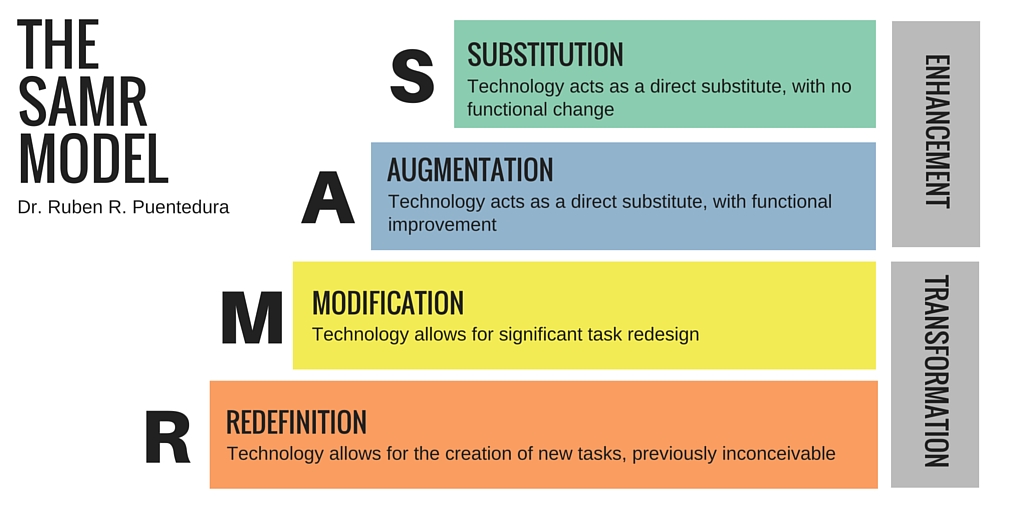 I was surprised by the SAMR model. I thought that I integrated technology pretty effectively in my classroom, but really I am only reaching the substitution and augmentation levels. That means it's back to the drawing board for me and setting new goals for technology integration to try and get to that redefinition level.
I was surprised by the SAMR model. I thought that I integrated technology pretty effectively in my classroom, but really I am only reaching the substitution and augmentation levels. That means it's back to the drawing board for me and setting new goals for technology integration to try and get to that redefinition level.- I think a logical starting point for using technology to differentiate for special needs, is to first get to know your students. You have to know what their strengths and need are if you are going to be successful at figuring out what technology will work best for them.
- Find out about what technology and software is available that could help them reach their potential. This is an ongoing process, because ICT develops constantly and new things are developed daily - especially in the field of technology.
- Select tech and software that fits with their strengths and needs and provide learning tasks that they can successfully complete independently. This will give them ownership of their own learning and build confidence
- Deliberately plan to integrate technology in your long term plans and annual learning goals. If you don't proactively decide how you will integrate, you might either not do it at all or forget about it untill las minute when it's too late to do it properly
- Pass on the knowledge to other teachers who might benefit from everything you have learned and do it in a way that is easy to access like a screen cast perhaps.
Participating in the discussion forums gives us an opportunity to learn from each other. Teachers are doing amazing things in their classroom, but we never find out about them if we don't go looking for it. This is what 'Ongoing Professional Learning means to me - seeking out new learning opportunities individually. One way of doing that is taking AQ courses because let's face it, sometimes being a teacher can feel a little like you are on an island.
Interacting with other teachers and sharing what we do also relates to 'Leadership in Learning Communities' because we take initiative by sharing our own strategies and looking critically at those of others to try and offer advice from our own experiences to try and improve their practice.
Finally, the reason we commit to extra professional learning in a schedule that is already jam packed (which often means late nights and weekends in front of the computer) is ultimately for the students. If what we learn here can trickle into our classrooms and kids can benefit from it, it means that we do demonstrate 'Commitment to Students and Student Learning.'
I am very interested in introducing coding in my grade 6 classroom next year and my goal is to research some more to find out how to integrate the curriculum to make it worth spending the time on. I think the kids will love it and find it very engaging.
I also want to keep fighting for more technology at my school, because as it stands, I can only book a class set of computers for a few periods a week.

No comments:
Post a Comment